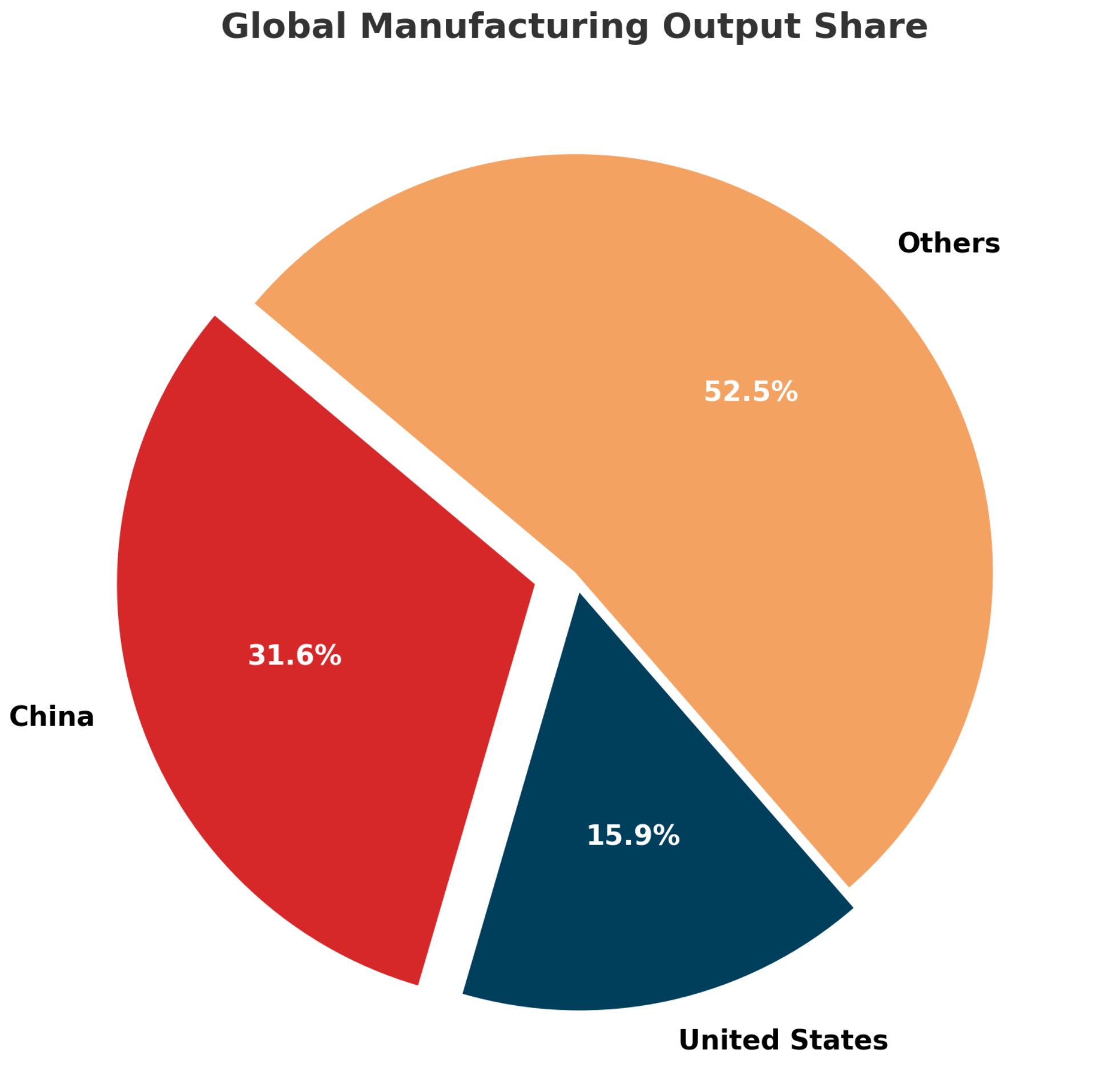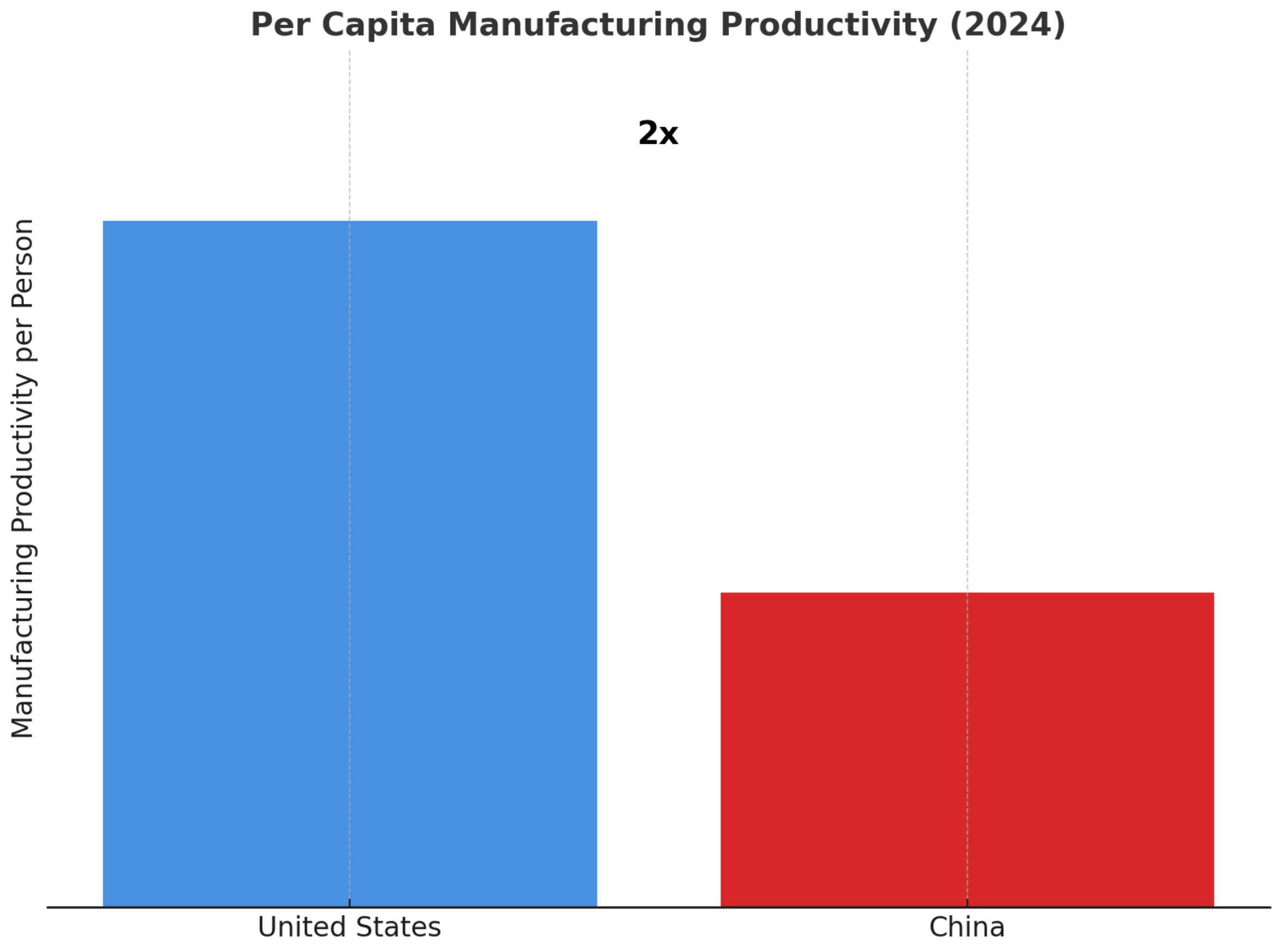We’re Still the Best Bakers: The Myth of American Manufacturing Decline
In Which I Explain Per Capita Manufacturing Favors the US
Summary
China manufactures more than the U.S.—but that’s because they have four times the population. When you look at per-person output, the U.S. is far more productive. There is no crisis. Tariffs won’t fix a problem that doesn’t exist.
The Non-Existent Crisis
We are told that America no longer produces anything, and that we’ve made a huge mistake by allowing China and other nations to become manufacturing powerhouses.
This is such a dire threat to America that the President claims emergency powers to unilaterally launch a trade war, hiking tariffs to levels not seen in nearly a century.
There are many problems with this approach, but the most glaring is that America is still a manufacturing powerhouse itself. In fact, it’s far more productive than China.
The Numbers
Let’s dig into why this misconception persists: raw numbers without context. It may be partially due to only looking at the total manufacturing output.
The World Bank data shows China at $4.6 trillion worth of manufacturing in 2023, and the US at $2.5 trillion in 2021. I’ll round China to $5 trillion to make the example even simpler.
That means China manufactures roughly twice as many goods as the US. That’s not just a lot in raw terms—China accounts for 31% of global manufacturing, while the US contributed only 16%.

So does China’s higher total output prove we’re falling behind? Not quite.
No, for a simple reason: China has ~1.4 billion people, and the US has ~350 million.
They have almost exactly four times our population, yet they only produce twice as much. This means that Americans manufacture twice as much as the Chinese, per person.

It’s difficult to conceive how our manufacturing superiority is a crisis.
An analogy: Bakeries

If you prefer analogies to dry numbers, let’s imagine that China and the US are two bakeries, one operating in a city and another in a small town.
The city supports a big bakery - it has 300 workers. Those three hundred workers produce 1,000 loaves of bread each day. Each city baker turns out about 3.3 loaves.
The small town has a population only one-quarter the size, and their bakery has only 70 workers. Despite having so few workers, they still produce half the output of the giant bakery, making 500 loaves a day. Each small town baker produces 7 loaves, double the productivity of their city counterparts.
Does the greater raw output of the city bakery threaten the small town bakery? That’s unlikely, since there’s demand for bread in both the city and town, as well as in other places. They’ve got better machinery and better bakers. They’ll be just fine.
Before launching a trade war, we should understand the numbers. America isn’t failing—we’re outperforming. Let’s not sabotage that with economic self-harm.